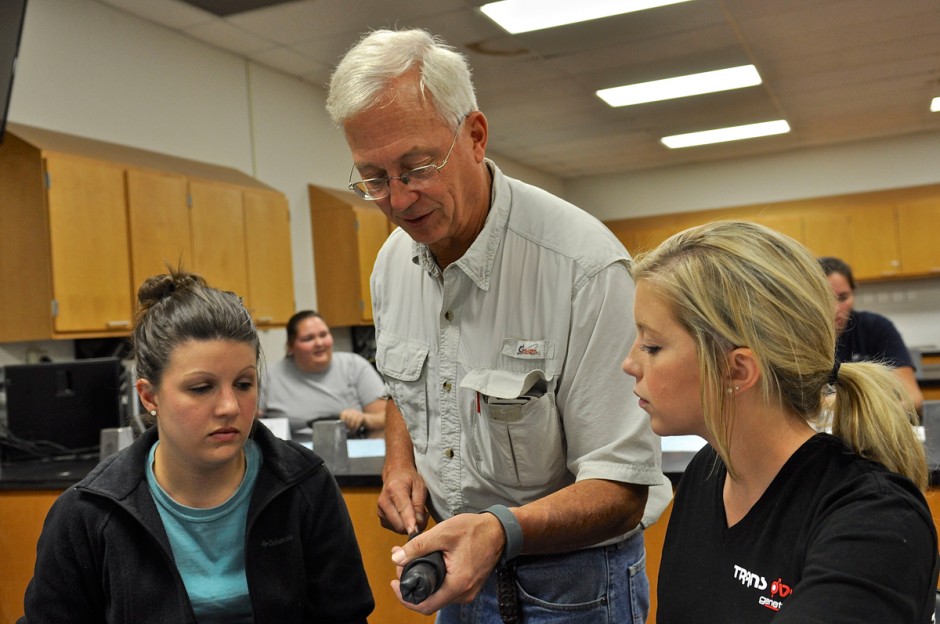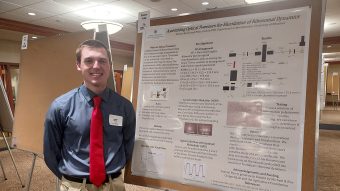
At one time or another, every cow-calf producer faces the issue of cattle fertility. A livestock operation raising cows that don’t give birth to a healthy calf each year will likely struggle to be profitable. Unfortunately, many factors hinder getting “a live calf on the ground,” to use the parlance of cattlemen.
The University of Missouri’s Division of Animal Sciences plays a crucial role in preparing students to be successful beef livestock producers. Beef cattle fertility is especially important in Missouri because beef is a leading economic driver. There are 1.9 million beef cattle in Missouri, compared to 90,000 dairy cattle.
For 25 years, Michael F. Smith has taught the animal science course Reproductive Management. One of the assignments in the course requires students to break into groups and develop a detailed plan for improving reproductive efficiency of a simulated beef cattle herd. The course utilizes computer programs and spreadsheets to mimic real-life reproduction decisions.
“I felt it was important for students to learn how to apply the basic information they were learning to the management of livestock animals,” said Smith, a professor of reproductive biology and winner of the 2015 Southeastern Conference’s Faculty Achievement Award.
But despite the course’s success, the meteoric rise of bovine genomic science has led Smith to reimagine some of its content. In the revamped course, premiering in fall 2016, students will compare and contrast traditional ways of addressing fertility issues with today’s DNA profiling of cattle. Funding for the curriculum change came from a portion of an MU grant on Angus fertility from the National Institute of Food and Agriculture.
Bovine DNA Profiling
For decades, cattle producers evaluated genetic merit of livestock through performance measurements and pedigree charts. But these methods were never perfect science. Jerry Taylor, Curators Professor of Physiology and Molecular Biology, said that, though the charts suggest genetic similarities, they don’t tell the whole genetic story of a cow. When speaking to producers about pedigree, Taylor asks them to consider how different they are from blood relatives. For humans as for cattle, “you could get full brothers and full sisters who are awfully different from one another,” Taylor said.
The human genome was sequenced in 2001, followed eight years later by the sequencing of the cow genome. By 2010, a cow-calf producer could take a blood sample from a heifer, mail it to a bovine DNA profiling service, and in a month have a read-out of the animals’ ranking in traits prized by the beef industry. The traits include meat quality, ease of calving and weaning weight. Gene Kinslow, co-owner of Windmill Cattle Co. in Fordland, Missouri, said that he DNA profiles all of his newborn heifers. The cost has never been more than $75 each.
“The real cost to a purebred breeder is not knowing for years which of your animals are actually genetically superior,” Kinslow said. “That amounts to lost time, huge unnecessary expense and slow genetic progress” in the herd.
Genetics also play a role in whether a sire and cow will produce a calf at all. If a farmer unknowingly pairs animals of a certain genetic type, there is a reasonable chance the embryo will die due to the “broken gene” phenomenon, geneticists say. But if both animals are DNA profiled, a farmer can make a more informed decision in pair breeding.
‘Learning Is Context’
In the revamped Reproduction Management class, students will make decisions on which animals to breed together using database information and genomic information. How does DNA profiling influence a student’s selection of mates? How does it impact the bottom line of the simulated cattle operation?
Having hands-on experience involving the monetary advantages of cattle genotyping can help students navigate a beef-cattle culture slow to adopt genomic technology.
“Learning is context,” Smith said. “You could lecture on genomics, and the students will remember some of what you said. But if you put them in a position where they have to utilize genomic information — creating ‘the need to know’ — they have to truly understand the topic. This gives them a deeper understanding of the material.”



